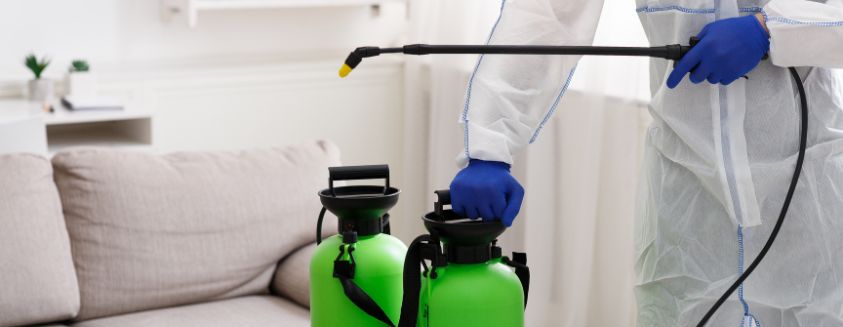

Restoration and Remediation
Mold can grow 24 to 48 hours after water invasion, which affects buildings of all types. Consequently, damage and cost controls are contingent on an effective remediation plan for cleaning and drying contaminated surfaces, pollutants from bad air quality, and long-term prevention. At H.B. Fuller, our Remove-Remediate-Restore™ approach for mold remediation is designed specifically to defend against both mold growth and re-growth on the coating’s surface.
Indoor Air Quality
According to the EPA, “Indoor Air Quality (IAQ) refers to the air quality within and around buildings and structures, especially as it relates to the health and comfort of building occupants. Understanding and controlling common pollutants indoors can help reduce your risk of indoor health concerns.”
At H.B. Fuller, we know that humidity and bad air quality play a role in surface contamination and mold growth, which is why we provide disinfectants and mold resistant coatings that are ideally suited for water damage restoration projects. Our remediation plan, Remove-Remediate-Restore™, includes steps to clean and dry contaminated surfaces, remove residual microbial contaminants, and prevent mold from re-occurring with a fungicidal or mold resistant coatings.
- Remove: Remove all materials that have sustained water damage or that are mold contaminated. Materials that will be left in place should be cleaned and dried.
- Remediate: Apply EPA registered, Foster® 40-80 First Defense™ Disinfectant and Cleaner to kill odor causing bacteria and inhibit the growth of mold and mildew.
- Restore: Apply Foster® coatings to provide a clean, fresh surface coat with long-term protection to the coating’s surface.
Disinfectant
Water intrusion resulting from flooding, storm damage and broken or leaking pipes can have a devastating impact in homes and buildings. Mold and mildew growth is often one of the biggest problems. To limit damage and control costs, proper clean up, drying and repair are necessary immediately after a water intrusion event occurs.Working with a water damage restoration or mold remediation expert will ensure water damage to your home or building is properly evaluated and addressed and that a plan is developed to correct any problems. This includes cleaning and disinfecting any contaminated surface to kill mildew, odor-causing bacteria, and mold — then, sealing the surface with a mold-resistant coating for extended protection.
At H.B. Fuller, though each water damage restoration project is unique, all projects have the same desired end result — to safely and effectively remove the contaminants, return the building to its original condition, and prevent mold from re-occurring.
Asbestos Abatement
We also carry a full line of asbestos abatement products, including penetrating encapsulants, bridging encapsulants, and post-removal lockdowns and surfactants.
Penetrating Encapsulants: These encapsulants are sprayed onto porous asbestos containing material (ACM), soaking in and coating the fibers. When dry, they form a tough, damage-resistant crust, allowing the ACM to be left in place.
Bridging Encapsulants: These encapsulants are sprayed onto the ACM surface, forming a tough, damage-resistant, outer coating that keeps asbestos fibers sealed behind them. This is used when the ACM is to be left in place.
Post Removal Lockdowns and Surfactants: After ACM is removed, the products are spray applied to surfaces to “lock down” any residual fibers to the surface and prevent airborne release. Diluted with water, surfactants help reduce the surface tension of the water to improve wetting of the ACM during removal and keep asbestos fibers from becoming airborne.


